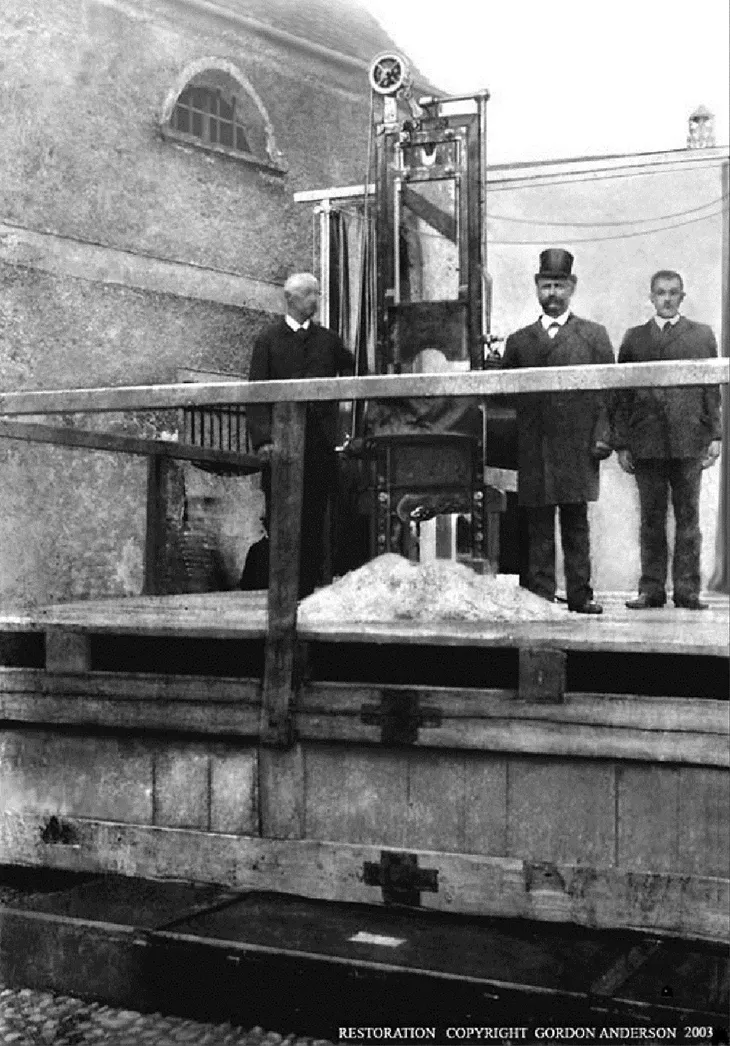Johann Reichhart byl jeden z nejvíce kontroverzních německých katů, kteří zabíjeli na popravištích během druhé světové války. Za svou kariéru provedl více než 3 000 poprav pomocí gilotiny a všechen jeho život mohl být popsán jako temný. Zde se podíváme na jeho kontroverzní práci a osobní život, abychom lépe porozuměli této tragické postavě nacistického Německa.
„Když jsme přišli do klece, věděli jsme, že už dál nepůjdeme.“ – Johann Reichhart
Johann Reichhart (29 April 1893 – 26 April 1972) was a German state-appointed judicial executioner in Bavaria from 1924 to 1946. During the Nazi period, he executed numerous people who were sentenced to death for their resistance to the German government. After the war, he was employed as executioner by the US Military Government in Germany. In total, he executed 3,165 people.

„Člověk musí být silný, aby dokázal takové věci dělat.“ – Johann Reichhart
Johann Reichhart byl ale v tomto oboru patrně rekordmanem. Během dvaadvaceti let v Německu popravil 3 166 lidí. Poprava na gilotině mu trvala jen několik …
„Svou práci jsem nikdy nevnímal jako vraždění, ale jako plnění povinnosti.“ – Johann Reichhart
Johann Reichhart (29.dubna 1893 – 26. duben 1972) se narodil ve Wichenbachu v rodině katů a pohodných (Pohodný, někdy též antoušek či ras je již zaniklé řemeslo, které …
„Každý člověk, který je odsouzen k smrti, si zaslouží důstojný konec.“ – Johann Reichhart
„Svou práci jsem nikdy neprovozoval pro peníze, ale protože jsem to považoval za správné.“ – Johann Reichhart
Johann Baptist Reichhart, né le 29 avril 1893 à Wichenbach près de Wörth sur le Danube et mort le 26 avril 1972 à Dorfen (près d’Erding), est un bourreau allemand. Descendant …
„Nikdy jsem nevstoupil do klece s myšlenkou, že bych chtěl někoho zabít.“ – Johann Reichhart
The name Johann Reichhart might not be one synonymous with Nazi Germany but his ruthless killing streak made him one of the most feared members of the regime. Reichhart was born into a line of German …
„Smrt je pro každého z nás nevyhnutelná, ale když přijde, musí být důstojná.“ – Johann Reichhart
Johann Reichhart byl jeden z nejvíce kontroverzních německých katů, kteří zabíjeli na popravištích během druhé světové války. Za svou kariéru provedl více než 3 …
„Můj úkol byl dát lidem důstojný konec, ne jim ubližovat.“ – Johann Reichhart
Johann Reichhart (ur. 29 kwietnia 1893, zm. 26 kwietnia 1972) – niemiecki kat państwowy, aktywny zwłaszcza w okresie dyktatury hitlerowskiej, a także pewien czas po wojnie, do …
„Zabíjet není nic příjemného, ale někdy musí být provedeno.“ – Johann Reichhart
Johann Reichhart (Wörth an der Donau, 29 aprile 1893 – Dorfen, 26 aprile 1972) è stato un boia tedesco della Germania nazista, noto per il suo macabro record di 3.165 esecuzioni
„Byl jsem odsouzen k tomu, abych dělal svou práci a ne aby ji odmítl.“ – Johann Reichhart
Johann Reichhart (født 29. april 1893 i Wichenbach ved Wörth an der Donau, død 26. april 1972 i Dorfen ved Erding) var en bayersk skarpretter. I løpet av sin skarpretterkarriere fra …
„Smrt je přirozenou součástí života a všechny bychom se měli naučit s tím žít.“ – Johann Reichhart
„Dokázal jsem se smířit se svou prací a věřím, že i lidé, které jsem odsoudil, byli připraveni na svou smrt.“ – Johann Reichhart
„Nikdy jsem nechtěl, aby se moje práce stala nástrojem pro politické účely.“ – Johann Reichhart
„Moje práce byla plněním povinnosti vůči společnosti a vůči těm, kteří byli odsouzeni k trestu smrti.“ – Johann Reichhart
„Byl jsem si vědom odpovědnosti, kterou jsem nesl, a snažil jsem se ji plnit co nejlépe.“ – Johann Reichhart
„Smrt není nic, co bychom měli brát na lehkou váhu, ale někdy musí být provedena.“ – Johann Reichhart
„Nikdy jsem nevnímal svou práci jako vraždění, ale jako plnění svého poslání.“ – Johann Reichhart
„Každý člověk má právo na důstojnou smrt, bez ohledu na to, co udělal.“ – Johann Reichhart
„Smrt není nic příjemného, ale když přijde, musí být důstojná a rychlá.“ – Johann Reichhart
„Můj úkol byl dát lidem důstojný konec, a to jsem se snažil plnit co nejlépe.“ – Johann Reichhart.
Děkujeme vám, že jste četli náš příspěvek o Johannu Reichhartovi. Tento německý kat, který se stal nejznámějším popravčím v nacistickém Německu, je fascinující postavou moderní historie. Jeho život a práce nám připomínají temné a bolestivé časy, které nikdy nesmí být zapomenuty. Věříme, že tento příběh vás inspiroval k zamyšlení nad lidskou povahou a výzvami, kterým čelíme jako lidstvo.
